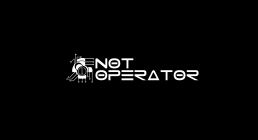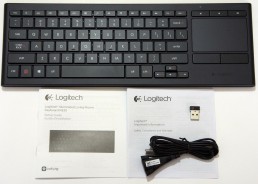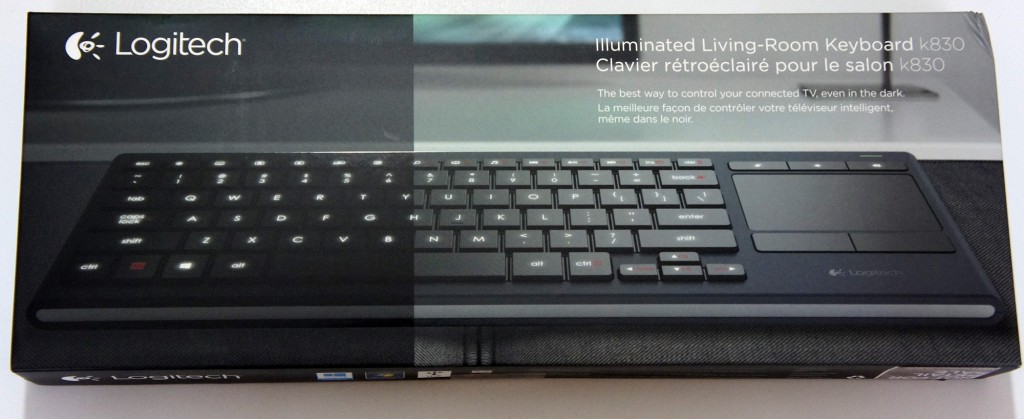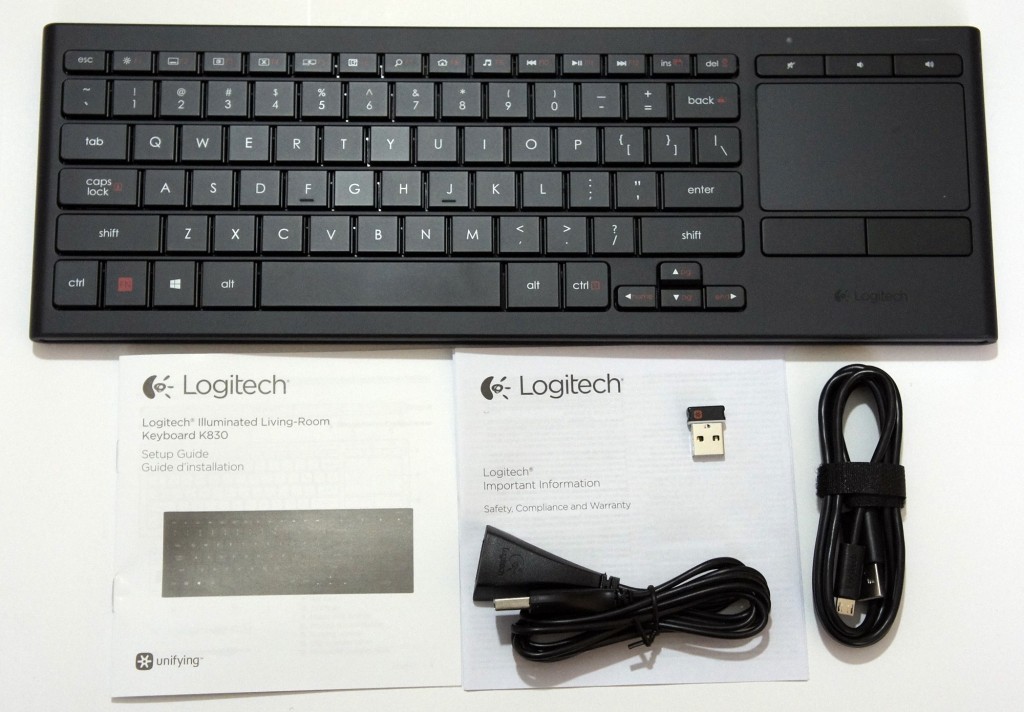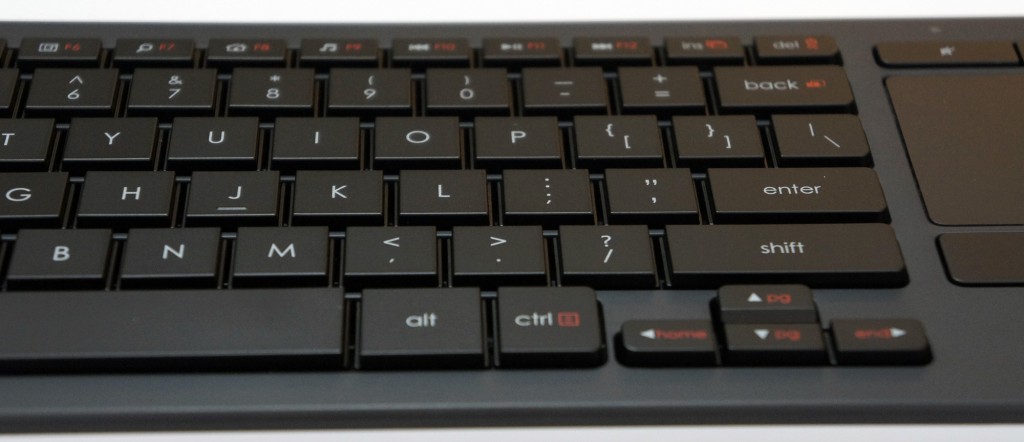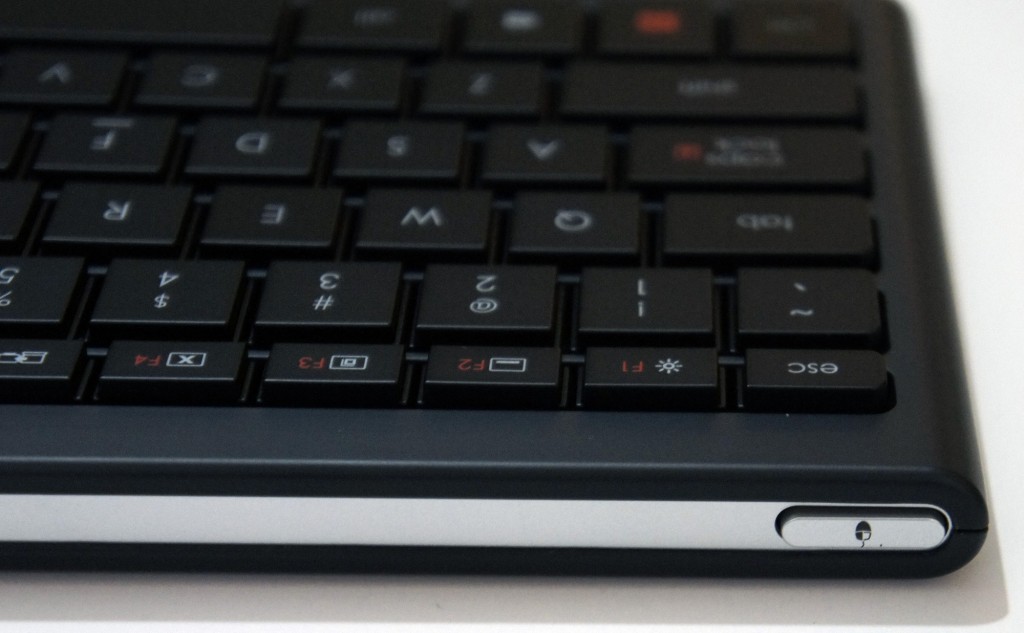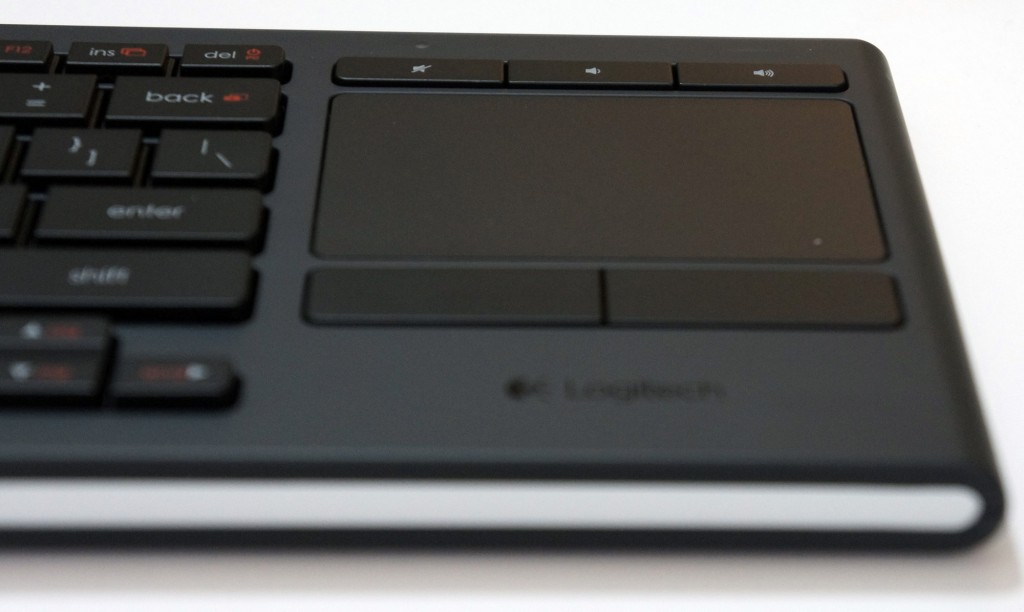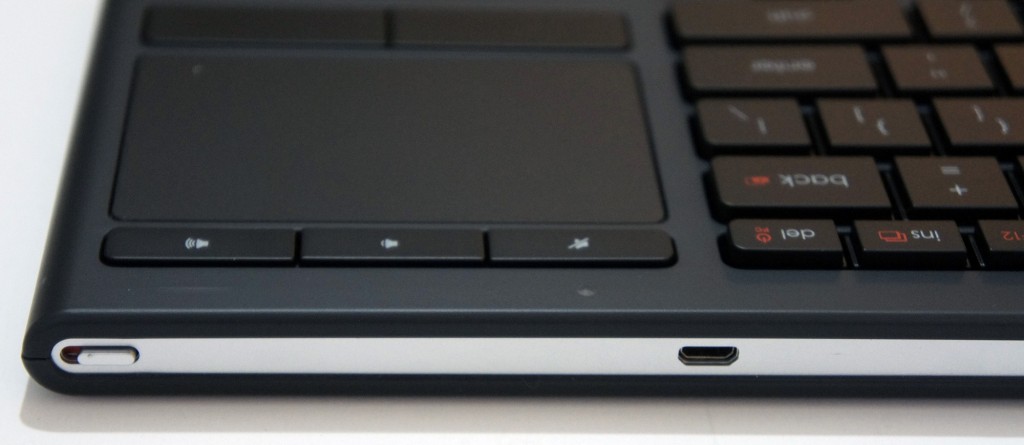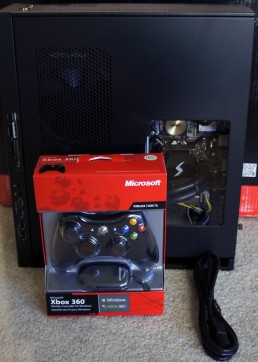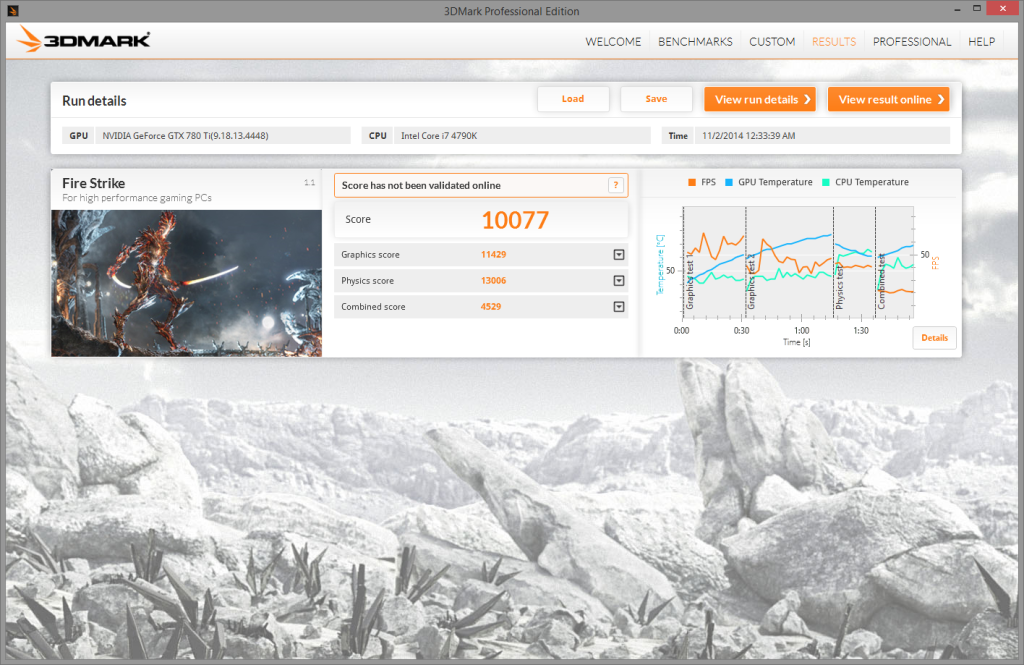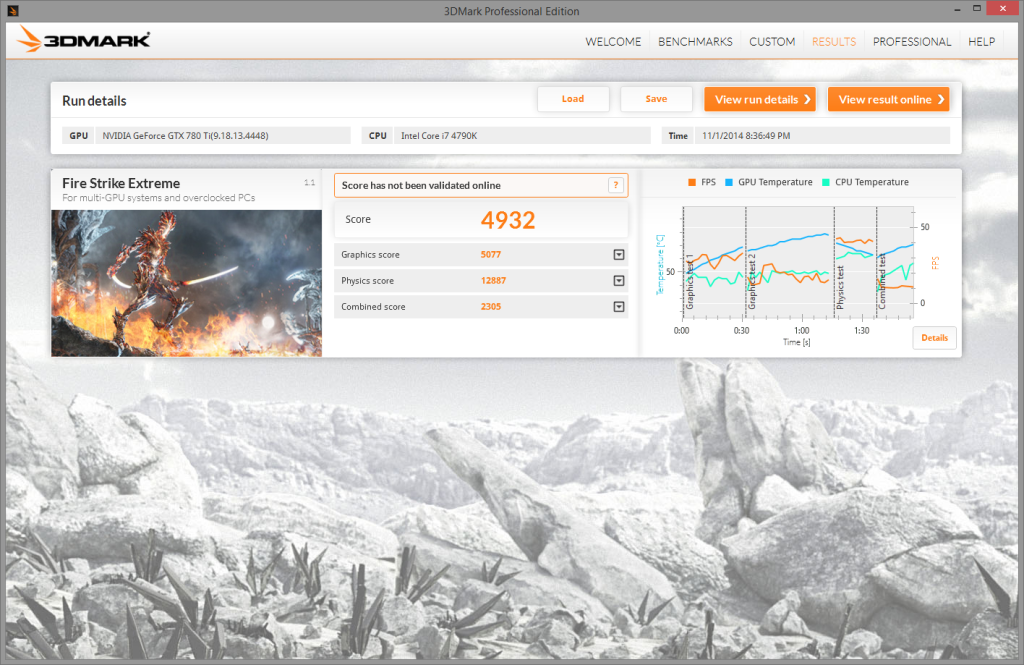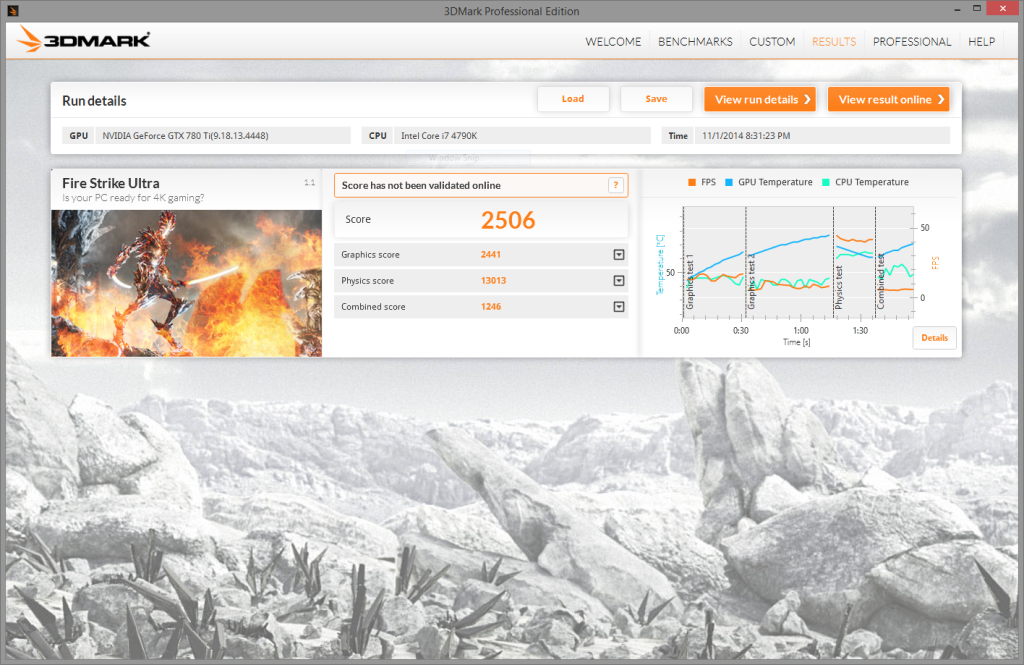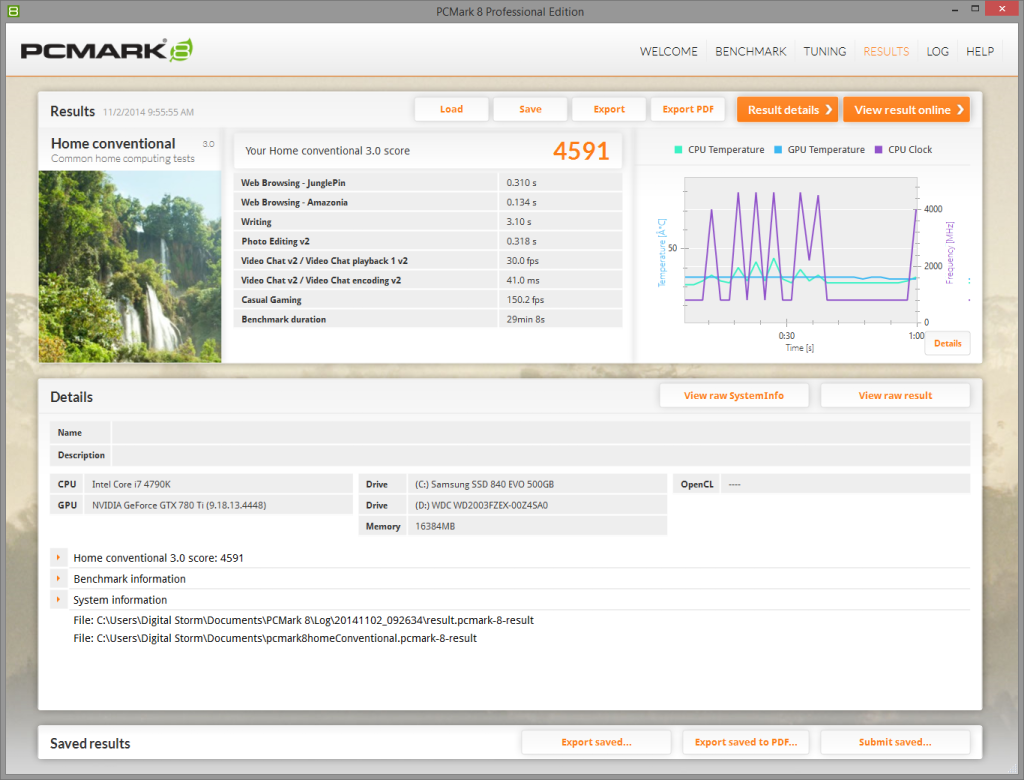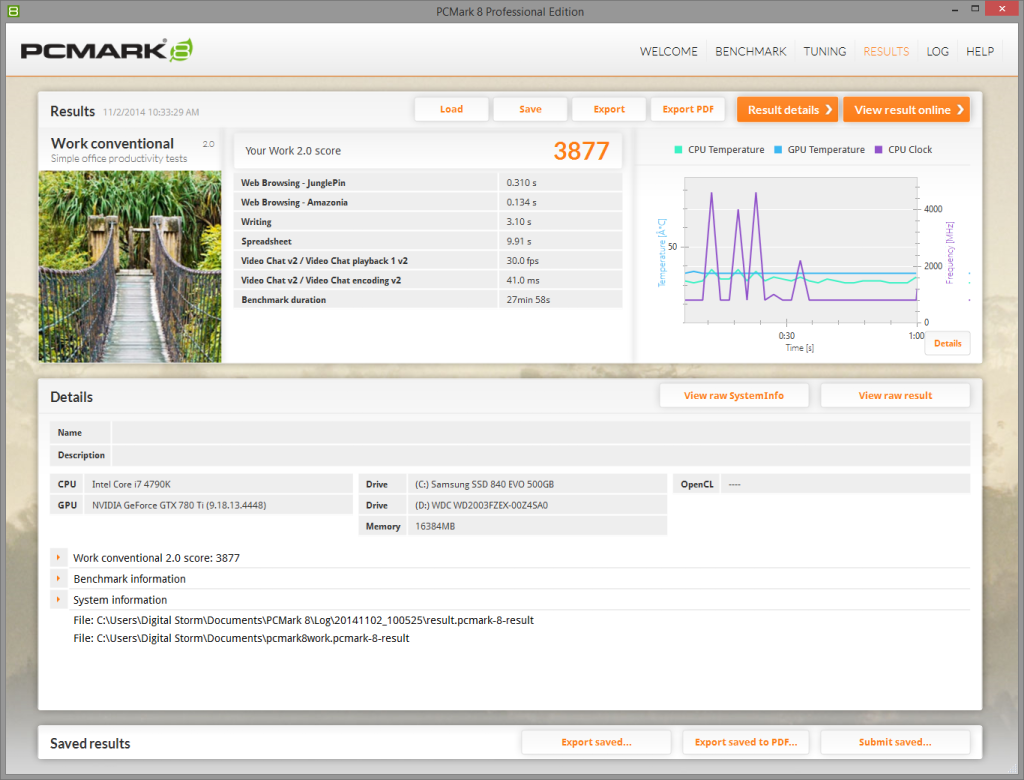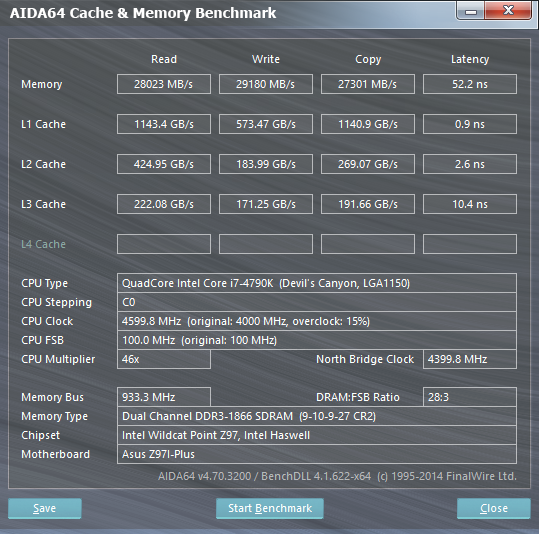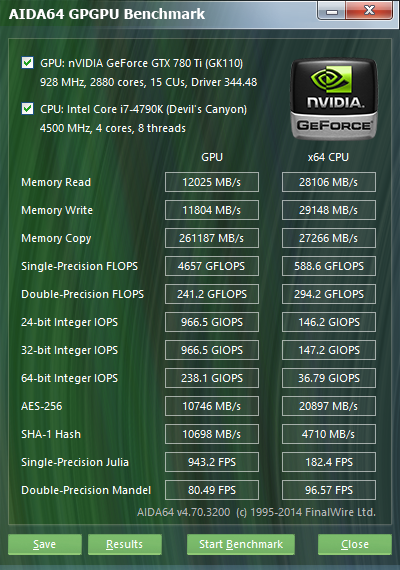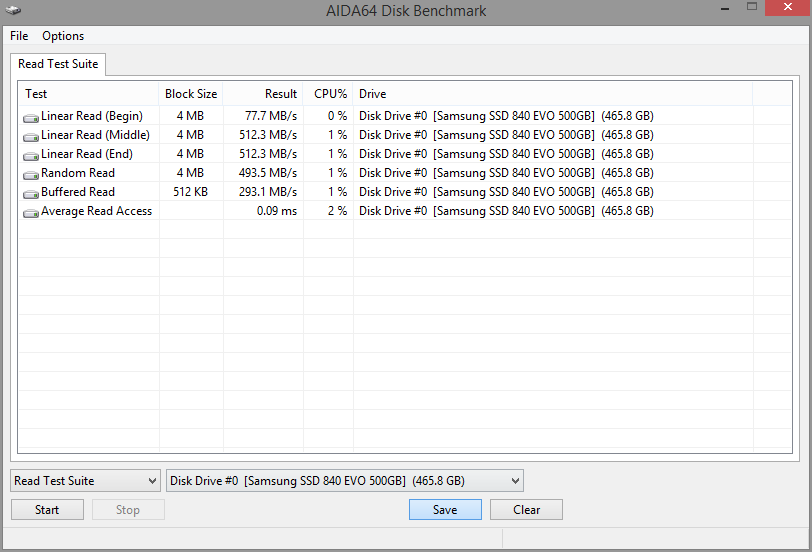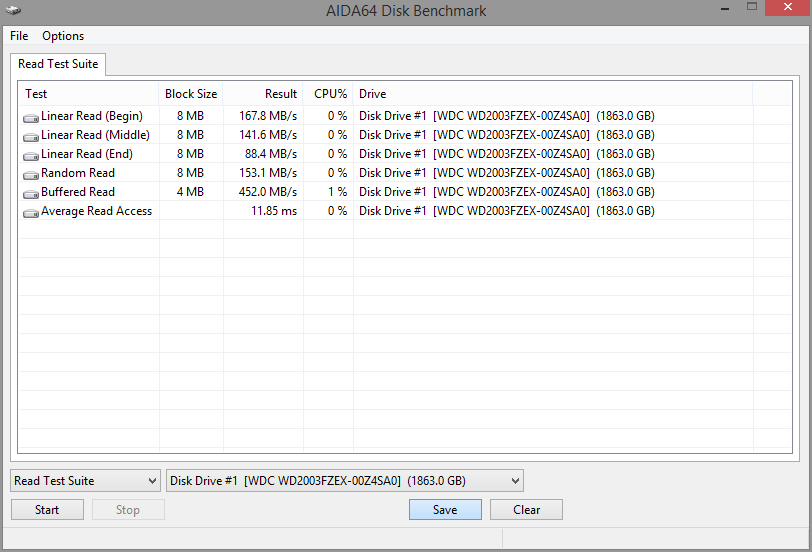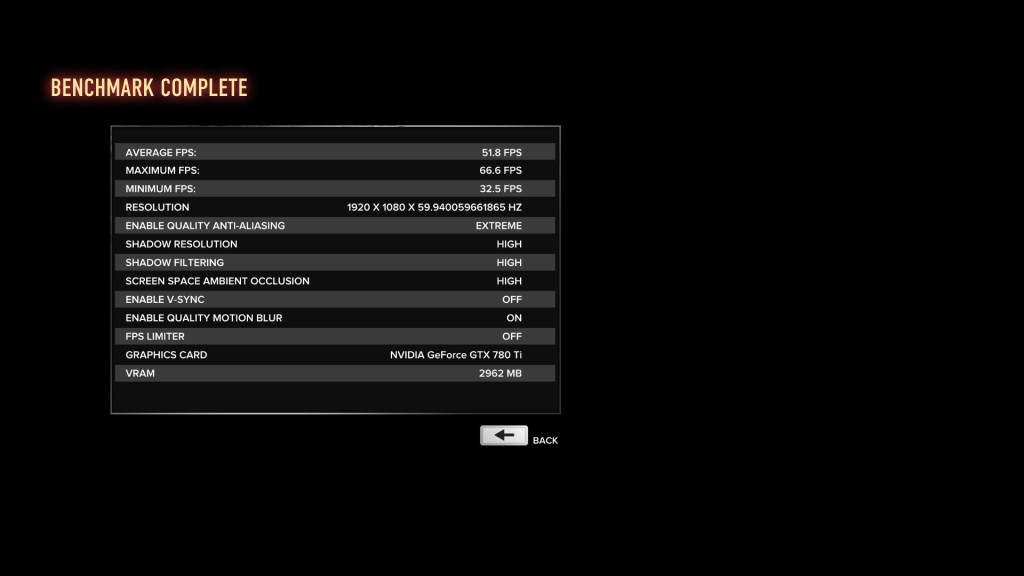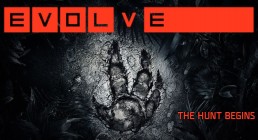pc
NotOpodcast: Episode 6
Welcome to the sixth episode of NotOpodcast, where Michael and Anshel join me to discuss a variety of topics such as No Man's Sky, the latest in VR gaming, Anshel's experiences at VRLA (the Virtual Reality expo in Los Angeles), the new Samsung Galaxy Note7, the newest GPUs on the market, firearms in video games, and some basics of pistol mechanics.
The timecodes are:
Gaming - 1:00 - No Man's Sky, latest in VR gaming
Technology - 22:23 - VRLA (Virtual Reality: Los Angeles) Expo, Samsung Galaxy Note7, latest GPUs (Graphics Cards)
Firearms - 1:01:07 - Guns in Games, Basics of Pistol Mechanics
Review: Logitech K830 Illuminated Living Room Wireless Keyboard
Normally, I consider myself a mechanical keyboard purist. I scoff in pity and disgust at those poor souls who still use rubber dome or scissor switch (eww, gross) keyboards.
Unfortunately for me, mechanical keyboards tend to come in two flavors – gaming and enthusiast (aka: super utilitarian). This is great for desk use, which is where I tend to spend the vast majority of my day. However, for living room use, attaching my favorite mechanical keyboard to my DOKO or media PC using a 1000 foot USB extension cable feels a bit excessive and inconvenient.
Also, despite my best attempts, I have yet to become ‘that guy’ who only uses command line interfaces to do everything, so I still find the mouse to be a necessary PC peripheral. This also poses a problem for the living room, since the couch cushions make for a poor mouse pad, and attempting to use my girlfriend as a mouse pad results in several lectures delivered at painful decibel levels that suggest women are not objects for men to use. I’ve heard similar arguments in other situations, but I suppose women are also not mouse pads.
In any case, this brings me to the focus of this review, the Logitech K830 wireless living room keyboard. Despite not having mechanical key switches, I must admit it does its job very well.
The K830 has a well laid out keyboard and an integrated touchpad to the right of the keyboard (sorry lefties, looks like we forgot about you again). Although it uses the chiclet-style keys found on laptops, it doesn’t feel terrible to type on. If that’s a deal breaker for you, let’s be honest here it’s designed to be a living room keyboard. You should be doing your serious typing at a serious desk like a serious typist would.
Specifications:
- Width – 367 mm (or 14.4 inches)
- Height – 125.3 mm (or 4.9 inches)
- Depth – 16.5 mm (or 0.65 inches)
- Touchpad size – 80 x 52 mm (or 3.1 x 2.0 inches)
- Weight – 495 g (or 17.5 oz)
Setting up the K830 was very straightforward. The USB Bluetooth nub plugs into the computer, and the keyboard is ready to go. Logitech also includes a microUSB cable for charging the keyboard, and a USB extension cable that is supposed to be used to connect the Bluetooth dongle to the computer to extend its range, though it works just as well for extending the length of the microUSB cable.
The battery life, according to Logitech, is a full 10 days from just 3 hours of charging, based on a usage of 2 hours per day with the backlight at full brightness. In my experience with the K830, I’d say that sounds about right, though I did not use it religiously for 2 hours, 10 days in a row. In fact, most of the usage comprised of me turning on the keyboard, navigating to Netflix in the browser, starting a show/movie, and turning off the keyboard until I needed it again.
If I extrapolate based on Logitech’s math, using the keyboard for 10 minutes per day, as opposed to 120 minutes per day, means that I should get 120 days of battery life! For those of you who want to complain that their battery doesn’t last 120 days with 10 minutes of usage per day, please send all complaints to [email protected] (THANKS OBAMA).
The keyboard itself feels to be very high quality; nothing flimsy about it. It feels durable and solid, and not too plastic-y. The touchpad works as well as any decent laptop touchpad would, and includes two click buttons below it, as well as a right-click button positioned on the top left of the keyboard.
Tap-click was enabled by default on the touchpad, but it can be changed with a function-key combination. Since there’s no dedicated software suite for the keyboard, all the options are configurable using key combinations, and are explained in the manual.
There’s not much else to say about such a simple, yet useful, keyboard. It works as intended, and does so while retaining a high quality feel and solid battery life. Currently retailing around $92 it’s a bit pricey compared to some cheap off-brand wireless keyboard + mouse combination, but it really sets itself apart from the competition in terms of quality, battery life, and features (which include an internal rechargeable battery and the integrated touchpad).
Overall, I’d recommend the Logitech K830 to anyone looking for a wireless living room keyboard (which is why my dad now has one). However, to those of you thinking “that’d be a great keyboard/touchpad combo for my desktop/laptop”, get a nice mechanical keyboard and stop embarrassing yourselves.
Review: Digital Storm Bolt II
Digital Storm is a company well known for pushing the limits of high-end desktops. While they have a variety of different models, only two fit into the 'slim' Small Form Factor (SFF) category. Whereas the Eclipse is the entry-level slim SFF PC designed to appeal to those working with smaller budgets, the Bolt is the other offering in the category, and aims much higher than its entry-level counterpart.
I had the opportunity to review the original Bolt when I still wrote for BSN, and I loved it, though there were a few design decisions I wanted to see changed.
Today I'm taking a look at the Digital Storm Bolt II. The successor to the original Bolt, it has undergone a variety of changes when compared to its predecessor. Two of the most common complaints with the original were addressed; the Bolt II now supports liquid cooling for the CPU (including 240mm liquid coolers), and the chassis has been redesigned to have a more traditional two-panel layout (as opposed to the shell design of the original).
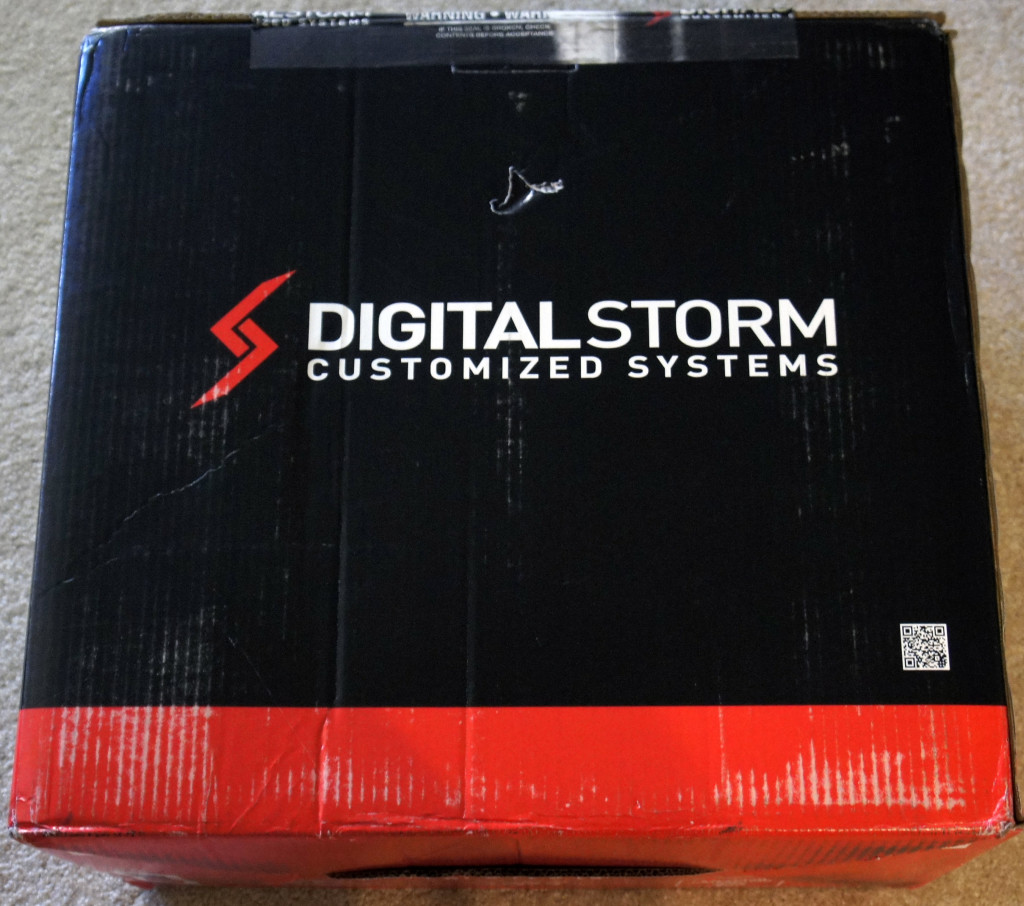

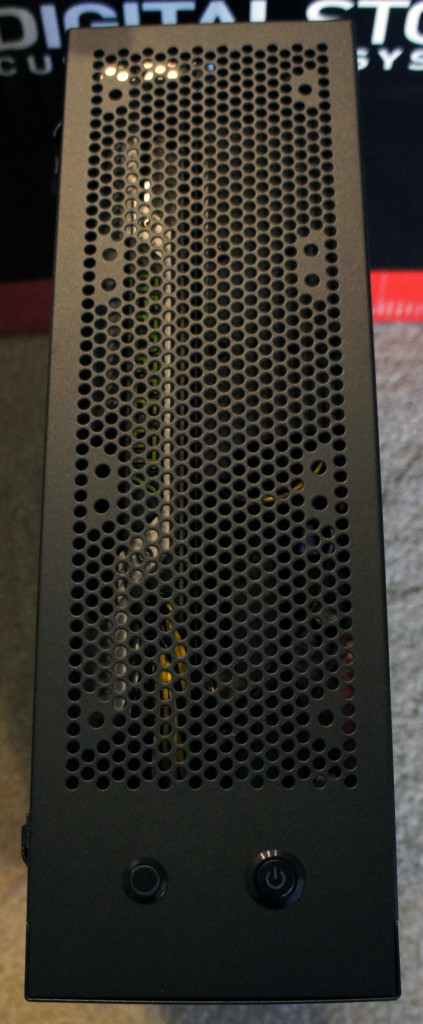
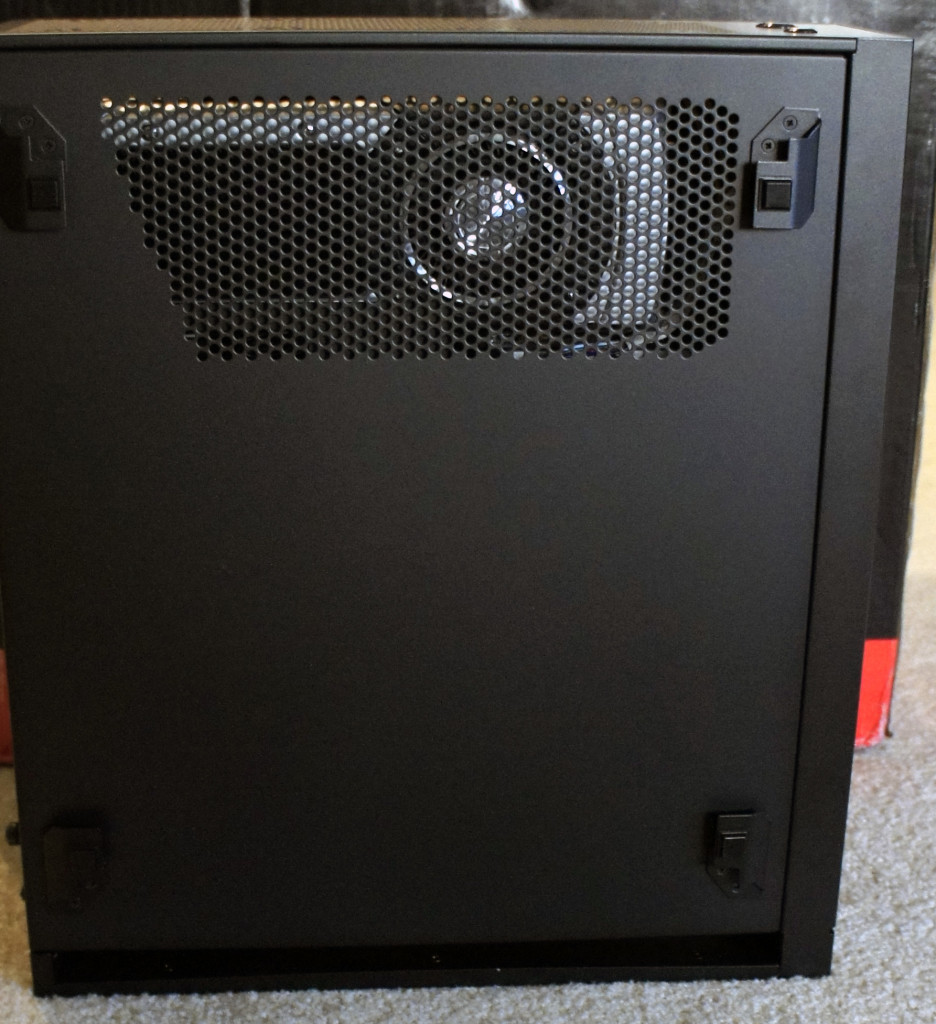
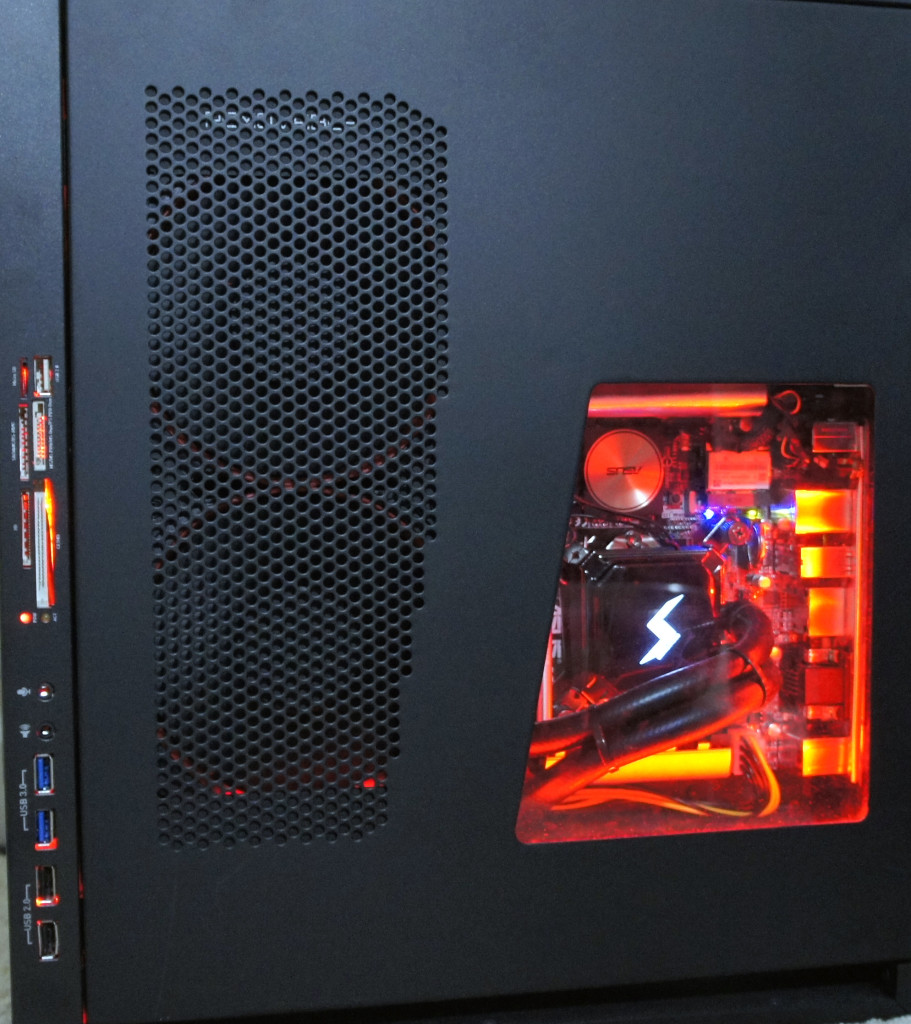 Specifications:
Specifications:
The Bolt II comes in four base configurations that can be customized further:
Level 1 (Starting at $1674):
- Base Specs:
- Intel Core i5 4590 CPU
- 8GB 1600MHz Memory
- NVIDIA GTX 760 2GB
- 120GB Samsung 840 EVO SSD
- 1TB 7200RPM Storage HDD
- ASUS H97 Motherboard
- 500W Digital Storm PSU
Level 2 (Starting at $1901):
- Base Specs:
- Intel Core i5 4690K CPU
- 8GB 1600MHz Memory
- NVIDIA GTX 970 4GB
- 120GB Samsung 840 EVO SSD
- 1TB 7200RPM Storage HDD
- ASUS H97 Motherboard
- 500W Digital Storm PSU
Level 3 (Starting at $2569):
- Base Specs:
- Intel Core i7 4790K CPU
- 16GB 1600MHz Memory
- NVIDIA GTX 980 4GB
- 120GB Samsung 840 EVO SSD
- 1TB 7200RPM Storage HDD
- ASUS Z97 Motherboard
- 500W Digital Storm PSU
Battlebox Edition (Starting at $4098):
- Base Specs:
- Intel Core i7 4790K CPU
- 16GB 1600MHz Memory
- NVIDIA GTX TITAN Z 6GB
- 250GB Samsung 840 EVO SSD
- 1TB 7200RPM Storage HDD
- ASUS Z97 Motherboard
- 700W Digital Storm PSU
Note, the system I received for review came out prior to the release of the Nvidia GTX 900 series cards. These are the specifications for that system:
Reviewed System:
- Intel Core i7 4790K CPU (Overclocked to 4.6 GHz)
- 16GB DDR3 1866MHz Corsair Vengeance Pro Memory
- NVIDIA GTX 780Ti
- 500GB Samsung 840 EVO SSD
- 2TB 7200RPM Western Digital Black Edition HDD
- ASUS Z97I-Plus Mini ITX Motherboard
- 500W Digital Storm PSU
- Blu-Ray Player/DVD Burner Slim Slot Loading Edition
This system is pretty impressive considering how small it is. The Bolt II measures 4.4"(W) x 16.4"(H) x 14.1"(L), or for our readers outside of the US, approximately 11cm(W) x 42cm(H) x 36cm(L).

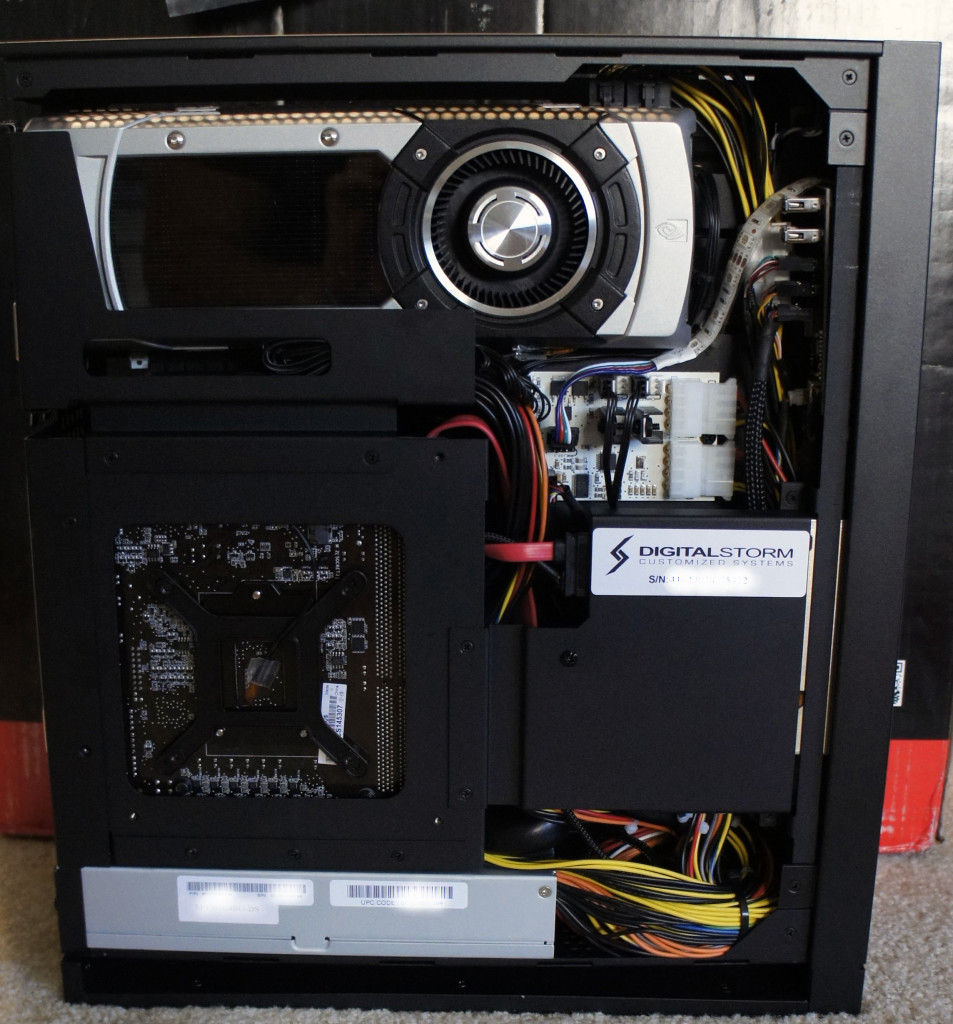
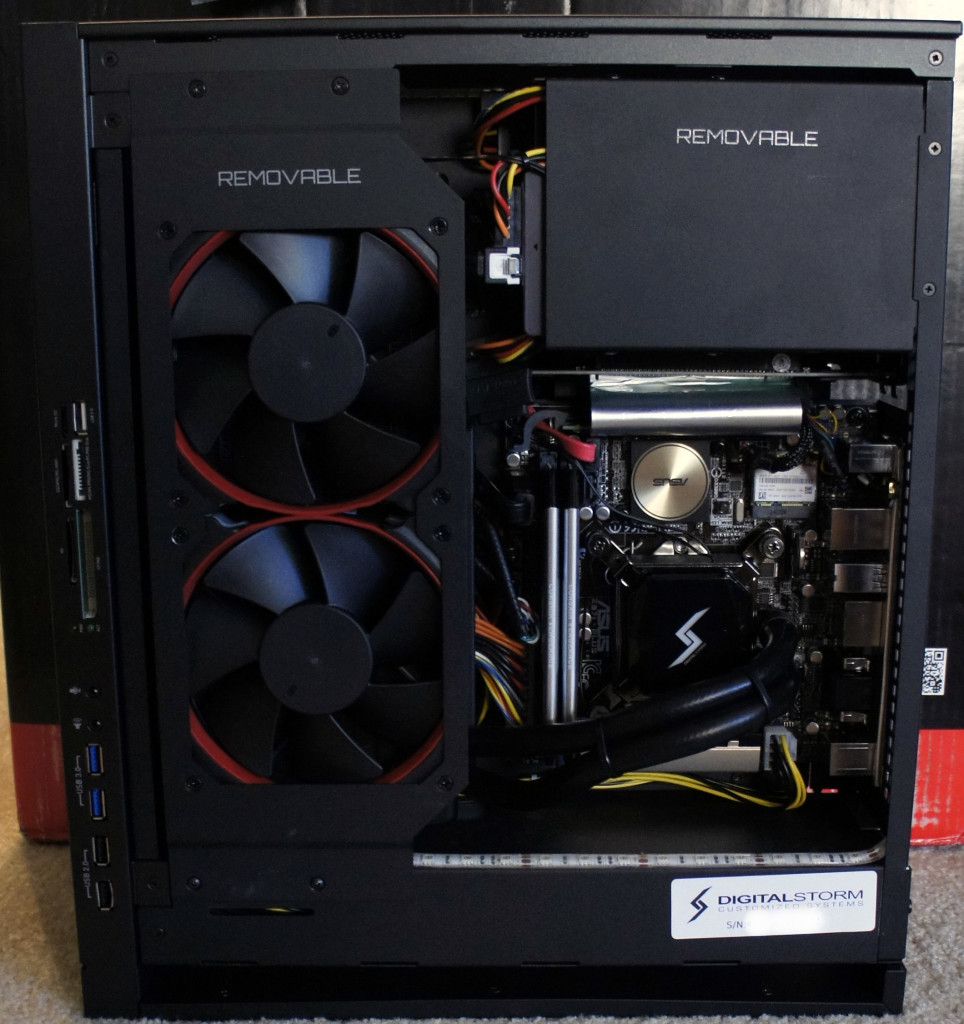 Design and Software
Design and Software
The Bolt II ships with Windows 8.1, but also comes with Steam preinstalled with Big Picture mode enabled, due to the fact that the Bolt II was originally slated to be a hybrid Steam Machine (Windows and Steam OS dual boot). Since Steam Machines had yet to materialize, the Bolt II shipped as a gaming PC designed for the living room, including feet attached to the side panel so the system can sit on its side.
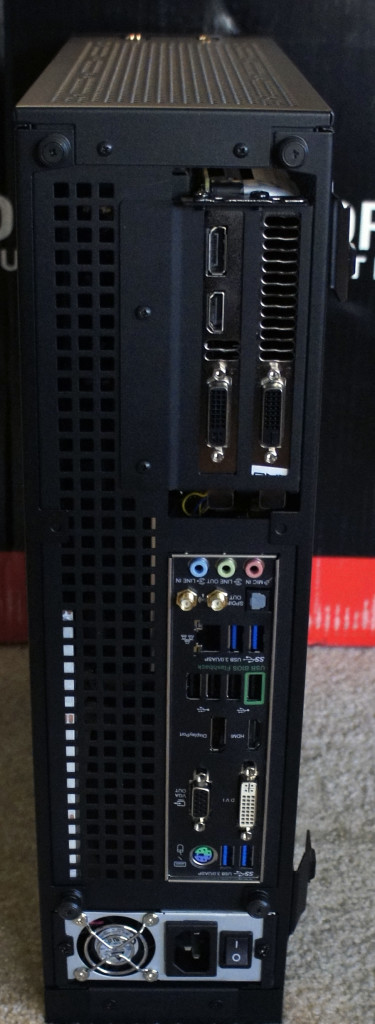 However, this design decision also makes sense of one of my largest annoyances with the computer; the front panel I/O ports are all on the right side of the chassis, near the front, at the bottom. If the system is stood up as one would typically have a desktop, the ports are moderately inconvenient to access. Conversely, if the system is placed on its side in a living room setting (such as under a television), the ports are perfectly accessible.
However, this design decision also makes sense of one of my largest annoyances with the computer; the front panel I/O ports are all on the right side of the chassis, near the front, at the bottom. If the system is stood up as one would typically have a desktop, the ports are moderately inconvenient to access. Conversely, if the system is placed on its side in a living room setting (such as under a television), the ports are perfectly accessible.
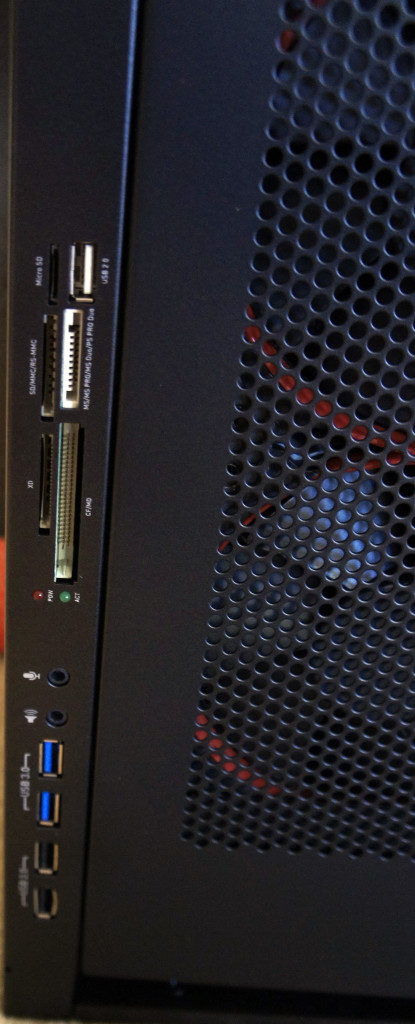 Digital Storm mentioned to us that once Steam Machines are ready to roll, they'll be shipping the Bolt II as it was originally intended: as a hybrid Steam Machine. Luckily for us, Steam Machines are coming out this March, so expect to see some hybrid systems from Digital Storm soon.
Digital Storm mentioned to us that once Steam Machines are ready to roll, they'll be shipping the Bolt II as it was originally intended: as a hybrid Steam Machine. Luckily for us, Steam Machines are coming out this March, so expect to see some hybrid systems from Digital Storm soon.
One of the joys of a boutique system is a comforting lack of bloatware, as the Bolt II comes with very little preinstalled. The only software installed on the system was the system drivers, Steam (as previously mentioned), and the Digital Storm Control Center. Here is what the desktop looked like upon initial boot:
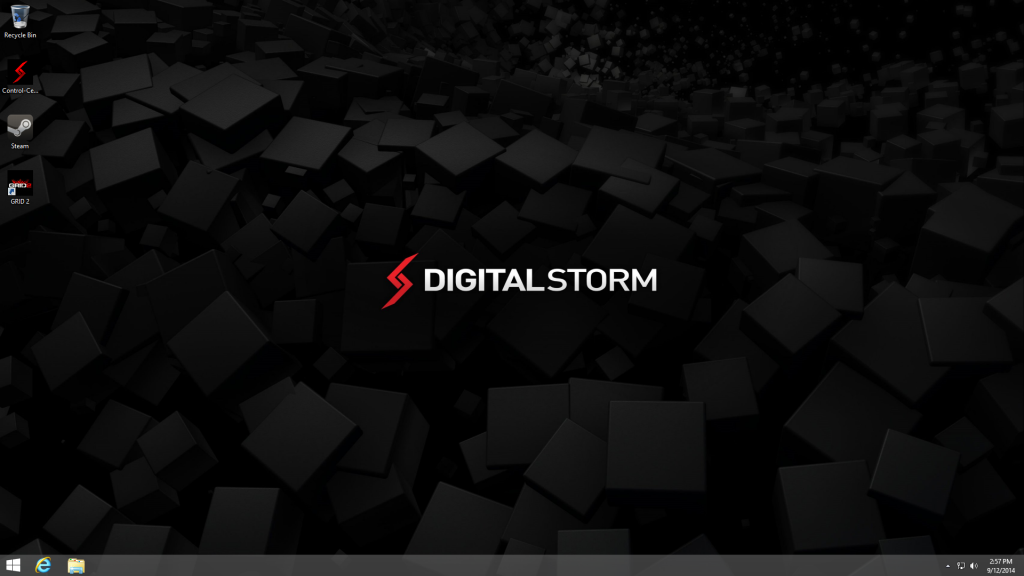 The Digital Storm Control Center is a custom piece of software for Digital Storm PCs designed to manage a system's cooling and lighting and provide metrics for the user. Much to my surprise, the software is designed and coded in-house, which explains the level of polish and quality the program possesses (as opposed to other companies that rely on 3rd party developers located in Asia with software solutions that often prove underwhelming).
The Digital Storm Control Center is a custom piece of software for Digital Storm PCs designed to manage a system's cooling and lighting and provide metrics for the user. Much to my surprise, the software is designed and coded in-house, which explains the level of polish and quality the program possesses (as opposed to other companies that rely on 3rd party developers located in Asia with software solutions that often prove underwhelming).
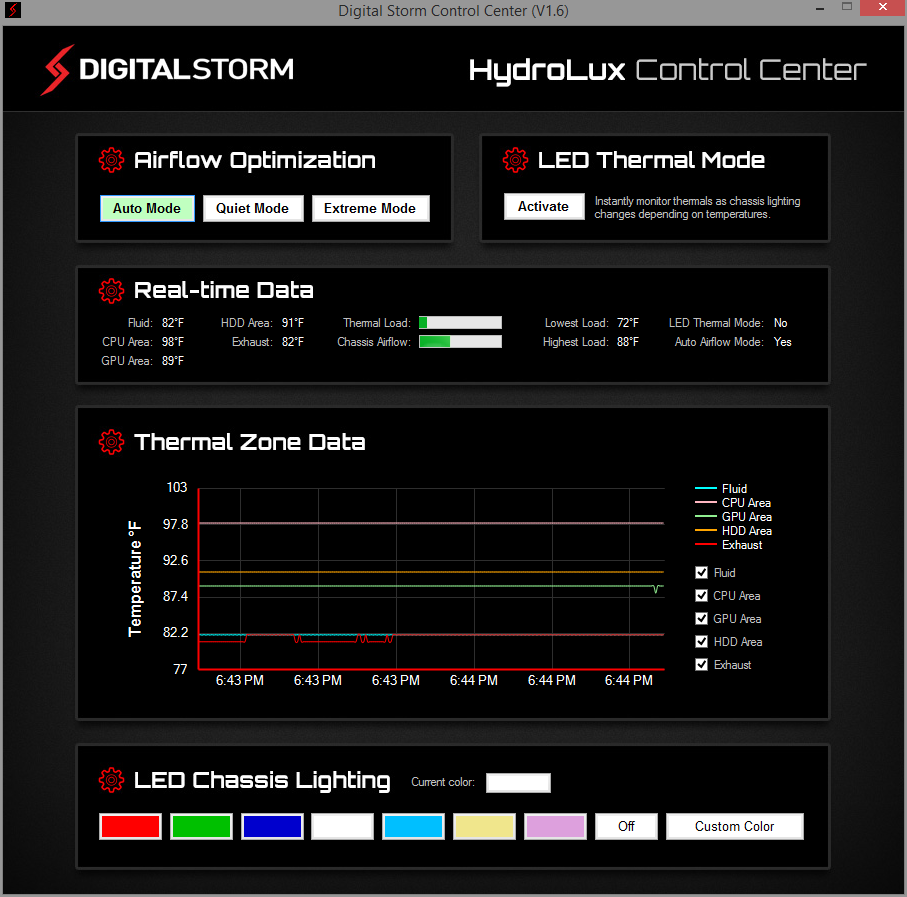
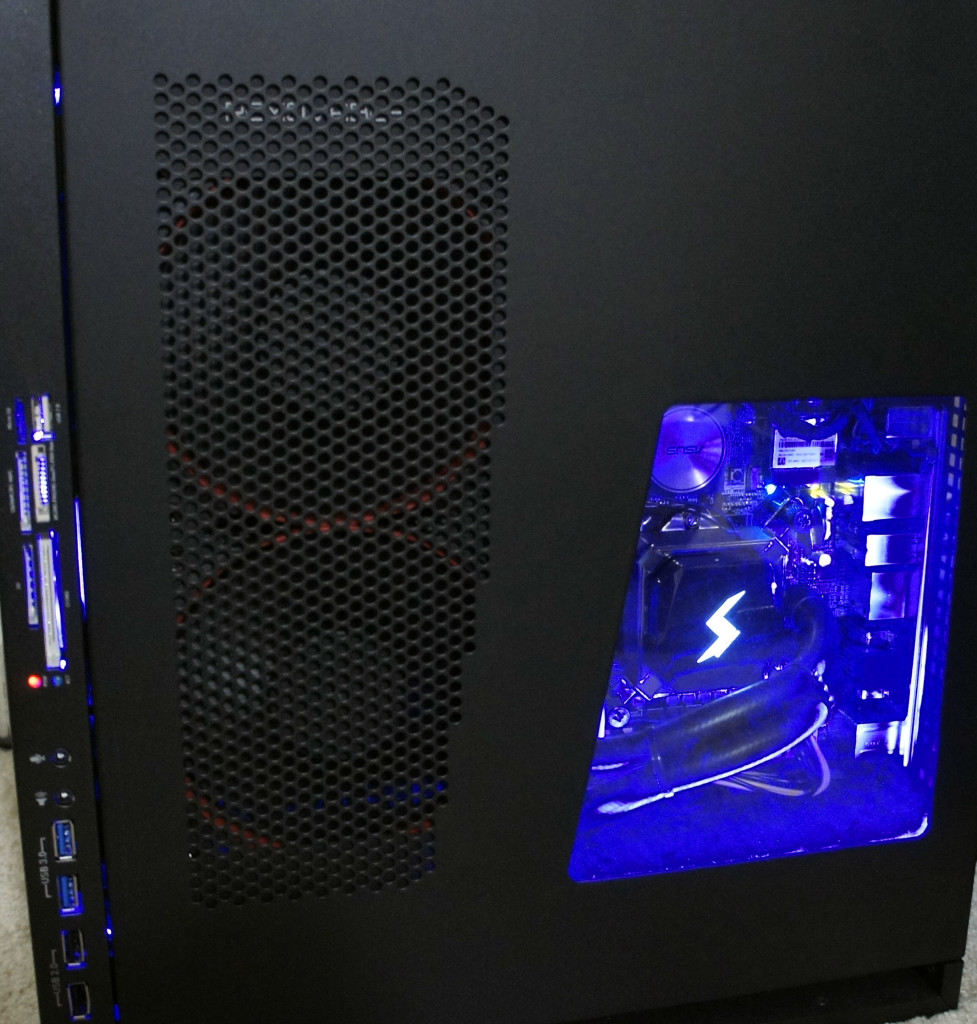
 Synthetic Benchmarks
Synthetic Benchmarks
Moving on to benchmarks, I'll start with the synthetics:
Starting with 3DMark's Fire Strike, the Bolt II managed a score of 10077.
Running 3DMark's Fire Strike in Extreme mode, the system scores 4932.
Rounding out 3DMark's Fire Strike is Ultra mode, with the Bolt II getting a score of 2506.
In PCMark 8, the Bolt II scores a 4591 when running the Home benchmark.
The other benchmark in PCMark 8 I ran was the Work benchmark, which had the Bolt II scoring 3877.
Now to cover AIDA64's sets of benchmarks:
The AIDA64 Cache and Memory benchmark yielded a Read of 28023 MB/s, Write of 29180 MB/s, Copy of 27301 MB/s, and Latency of 52.2 ns on the Memory.
The system got a Read of 1143.4 GB/s, Write of 573.47 GB/s, Copy of 1140.9 GB/s, and Latency of 0.9 ns on the L1 Cache.
It scored a Read of 424.95 GB/s, Write of 183.99 GB/s, Copy of 269.07 GB/s, and Latency of 2.6 ns on the L2 Cache.
Finally, it produced a Read of 222.08 GB/s, Write of 171.25 GB/s, Copy of 191.66 GB/s, and Latency of 10.4 ns on the L3 Cache.
AIDA64's GPGPU Benchmark results are up next:
The AIDA64 Disk Benchmark was then run on both the Samsung 840 EVO SSD and the Western Digital 2 TB Black Edition HDD.
The Samsung 840 EVO SSD yielded an average Read of 378 MB/s across 5 different tests, and a latency of 0.09 ms.
The Western Digital 2 TB Black Edition HDD yielded an average Read of 201.5 MB/s across 5 different tests, and a latency of 11.85 ms.
Gaming Benchmarks
Moving on to the results of the gaming benchmarks, now that the synthetic benchmarks have been covered:
Starting off with Sleeping Dogs: Definitive Edition, the benchmark was run using the settings listed in the screenshot, and it scored an average FPS of 51.8, a maximum FPS of 66.6 FPS, and a minimum FPS of 32.5.
Even when maxing out the game settings at 1080p resolution, the system maintains very playable framerates, which would look even better when paired with a display that utilizes FreeSync or G-Sync. In this case it would have to be G-Sync since this Bolt II configuration utilizes an Nvidia GPU.
Next up is Far Cry 4. I replayed the liberation of Varshakot Fortress in Outpost Master. Rather than use Nvidia's GeForce Experience optimized settings, which should theoretically provide the best overall experience, I cranked the game settings to Ultra at 1920x1080 resolution.
The game was very playable and smooth, getting an average FPS of 82.6, a maximum FPS of 665 FPS, and a minimum FPS of 56.
Moving on, I tested out Assassin's Creed Unity, now that most of the bugs have been sorted out. I ran Unity at the Ultra High setting, 1920x1080 resolution, again ignoring Nvidia’s optimized settings in order to see how the game would run at the top preset. I played through the intro sequence of the game, and excluded cutscenes.
The game was certainly playable, and oftentimes smooth, though there were occasional framerate drops and a tiny bit of noticeable tearing. The game had an average FPS of 38, a maximum FPS of 53 FPS, and a minimum FPS of 19. This would have also gotten some benefit from a FreeSync or G-Sync enabled display.
Value and Conclusion
Clearly the Bolt II is a very capable system, and the fact that it's available in a variety of customizable configurations to better fit the needs and budget of the consumer is a plus (it can be configured as low as $1100, or as high as $7800 excluding any accessories). Though I was impressed with the original Bolt, the Bolt II is a clear improvement in every way.
Whether or not the cost of the Bolt II is a good value is something that has to be determined by the consumer. Would it be cheaper to build yourself a PC with identical performance? Absolutely, even when building with the same or similar components. However, there are a few things that make the Digital Storm Bolt II stand out from a home-built PC.
First is the form factor. The Bolt II uses a fully custom chassis designed by Digital Storm, so no one building a PC at home can build into a chassis with the same dimensions. Most mini-ITX systems won't be anywhere near as slim.
Second is the warranty and guarantees of build-quality and performance of the system, which you can only get by purchasing a PC from a reputable company with a solid customer service record.
Third is the convenience. The Bolt II comes prebuilt, with the OS and drivers installed, and can also include a stable overclock verified by Digital Storm, custom lighting and cooling, as well as cable management. All of these factors sure makes building your own seem like more pain than it’s worth.
When compared to other system builders with similar SFF systems, the Bolt II still comes out number one in terms of fit and finish, as well as build quality. The metal chassis and custom design are really impressive, and serve to differentiate the Bolt II from other systems in a way that the Digital Storm Eclipse doesn't (though that is the budget model of course).
If you were to ask me if I would build my own PC or purchase a Bolt II, my answer would probably still be to build my own system. However, this is simply due to personal preference; the form factor is not all that necessary for my current lifestyle, and I value the flexibility of choosing my own components and saving money more than the hassle of putting together the system myself. Despite all of this, were I to need a prebuilt PC with a small footprint, there's no doubt the Bolt II would be my first choice.
Evolve – The Next Evolution of Multiplayer?
I remember the first time I played Evolve. At Comic Con last year, I braved the cosplaying hordes and made my way over to the Manchester Grand Hyatt to check out the Xbox Lounge and play some of the exclusive game demos within. When I walked into the Lounge, my attention immediately focused in on a large poster in the corner of the ballroom; a monstrous mark in the mud eerily reminiscent of the infamous T-Rex footprint from Jurassic Park, with just the phrase “EVOLVE” displayed above. I sped my way over to the demo area where I was greeted by a friendly team of the game’s developers, Turtle Rock Studios: “Do you want to play as the Monster?” I smirked, grabbed the controller, and proceeded to mercilessly eviscerate all four of the human-controlled hunters as the Cthulhu-like creature known only as Kraken. Sadly, during the time I’ve spent playing Evolve in the Big Alpha and open beta, and due the recent controversy over the game’s downloadable content, nothing has come close to matching my excitement since that first match back at the Xbox Lounge.
Evolve pits a team of four hunters, each with their own unique skills and weapons, up against one player-controlled monster in “asymmetrical multiplayer” battles. This means that the different teams, the hunters versus the monster in this case, have vastly different abilities at their disposal.
Player Types
The hunters are comprised of four classes, Assault, Support, Trapper, and Medic, and each have four unique skills to use, including a firearm. Monsters, which also have four distinctive powers, kill and eat AI wildlife in order to gain extra armor and eventually evolve, which endows the creature with more health and increases the damage of their abilities. Evolve was flawlessly described as “an intense game of Cat and Mouse where after enough cheese, the mouse can eat the cat.” This is Evolve at its core.
Environment
When the game launches in February it will have four multiplayer modes that span twelve maps. The maps add some diversity to the gameplay by throwing environmental hazards at the players in the form of both passive and aggressive AI wildlife, carnivorous plants that will swallow hunters whole, and more. Essentially, these threats were designed to add another element for the players to worry about on top of the hunter-monster battle. However, once you have played the maps and learned what and where these hazards are, as well as how to avoid them, that element of unpredictability is completely removed from the game. This just returns the players to the basic find the monster/kill the hunters gameplay, and the environmental threats become more of an annoyance than something that adds value to the game.
Game Modes
The four multiplayer gametypes are:
- Hunt – The basic ‘hunters versus the monster’ mode
- Rescue – The hunters have to revive and escort five AI human survivors to evacuation sites before the monster can kill five survivors
- Nest – The hunters have to destroy six monster eggs spread throughout the map within ten minutes, and the monster can hatch eggs to create monster minions to fight with
- Defend – A MOBA-like mode where a fully evolved monster and waves of monster minions attempt to destroy two generators before finally attacking a ship full of survivors.
It is important to note that despite the game modes having different objectives, they can all be ended immediately if all four hunters are killed by the monster, or if the monster is killed by the hunters. From a gameplay perspective that decision makes sense, but it detracts from the value of playing modes other than Hunt, due to the fact that every other game type is basically just another Hunt match with an added objective. There has been no confirmation from Turtle Rock that they are working on new gameplay modes for Evolve, which could really hurt the replay value and cause gamers to get bored of the game quicker than anticipated.
In addition to the four modes listed above is Evacuation, Evolve’s self-proclaimed “dynamic campaign.” However, aside from an introductory trailer that scratches together the surface of a story for the game, Evacuation simply strings together the four basic game modes over five multiplayer matches called “days,” culminating in a final round of Defend. The twist to Evacuation is that the winning side of each match gets some sort of advantage for the next round. For example, if the hunters win, in the very next match there may be some auto-turrets that attack the monster, and if the monster wins, there could be a large poisonous gas cloud that damages hunters when they are close to it. According to Turtle Rock, there are over 800,000 possible scenarios created by these advantages. However, the advantages merely result in another aspect to keep an eye out for in a match, not unlike the environmental hazards mentioned earlier. Even more disappointing here is that Turtle Rock blanketed one brief trailer over the four multiplayer modes already in the game, added some more hazards on top of the preexisting ones, and decided that was good enough to comprise Evacuation’s “dynamic campaign.” Calling it so is extremely misleading to the average customer, especially if they are on the fence deciding whether or not to pick up Evolve, notice the words “dynamic campaign” written somewhere on the back of the box, and buy the game thinking it has some sort of story mode. It does not.
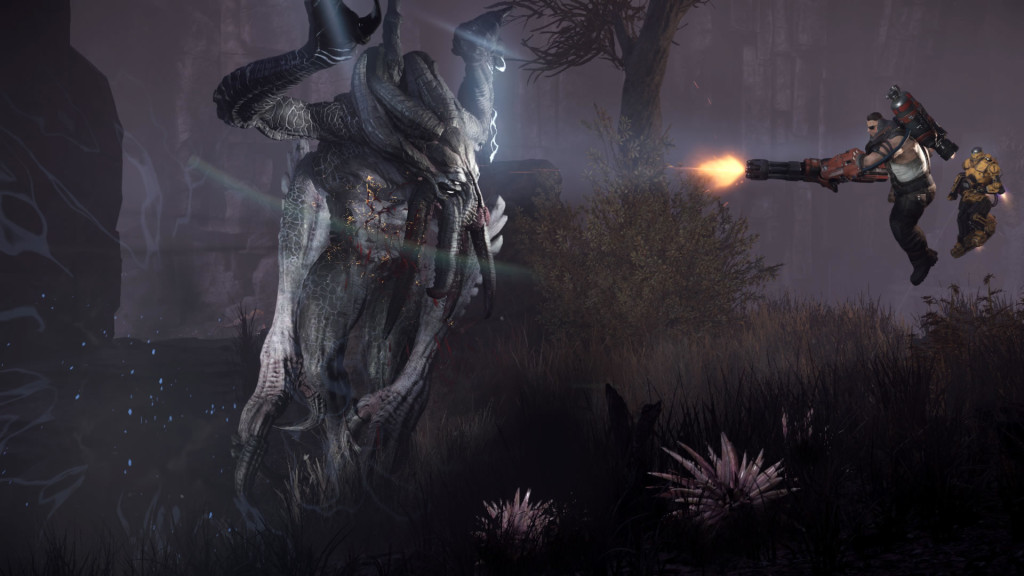
Downloadable Content
Evolve will ship with twelve maps, twelve hunters (three characters per class), and three monsters. Turtle Rock recently announced that the fourth monster, Behemoth, will be available for download in the spring for free if you pre-order the game. Conversely, if you do not pre-order Evolve and use the downloadable Behemoth code before midnight on the game’s release date, the only way to acquire Behemoth will be through a $14.99 purchase.
Additionally, if you have any interest in acquiring new hunters down that road, the Hunting Season Pass offers four new hunters and three monster skins that will set you back $24.99, but would retail at around $30 if all items within sold individually. Compare these prices to Destiny, for example, which sold its first “expansion,” The Dark Below, for $19.99. The price appeared to be pretty steep for just a handful of new story missions, a few Strikes, and one Raid, but it is quickly starting to look like a better deal compared to what’s happening with Evolve. Keep in mind, the Hunting Season Pass and Behemoth DLC only cover the first wave of downloadable characters. Any other hunters or monsters released down the road are going to cost you even more.
At this price point, Turtle Rock is effectively equating the value of one monster to a quarter of the total value of the game, and four hunters at approximately one-half. Now, I won’t pretend to understand all of the intricacies that go into creating new monsters and hunters. I am sure “it takes a lot of time, iteration and careful balancing”, and these prices are an attempt to reflect that. As a gamer who, despite what developers and publishers may think, is not made of money, it is disheartening knowing that before I even throw down the $60 to buy the game, there are all of these new hunters and monsters on the horizon. Together they’re expensive enough that I would be paying more than another full priced copy of the game if I want the chance to play all of the new hunters and monsters.
For an even better deal, Evolve is selling a Digital Deluxe version, combining the regular Evolve game with the Hunting Season Pass for just $80, a whopping $5 discount when compared to buying the game and Hunting Season Pass separately. Better yet, if you have a quality gaming PC, and are a baller, you can purchase the “PC Monster Race” edition of the game for $100, which gets you: the game, the Hunting Season Pass, Behemoth, the yet to be announced fifth monster, and two more hunters. Now if all of these different DLC’s and season passes seem like a lot to keep track of for game that has yet to be released, you are not alone. When the Creative Director of your game has to come out to publicly defend the DLC strategy, you might want to start rethinking how you got to this point. But hey, at least Turtle Rock is giving away any additional maps they crank out for free!
Online Play
Despite all of these flaws, the game really shines and is genuinely fun when there is a fully coordinated team of hunters playing together against an intelligent monster. It is a beautiful sight when every class is performing their role perfectly; the Trapper has the monster imprisoned within an impenetrable dome and is keeping it pinned to the ground with harpoons, Assault is blasting away at the monster and using their temporary invulnerability shield when they start to take damage, Support is cloaking nearby teammates raining down orbital strikes, and the Medic is doing their best to keep everyone’s health up. The downside to this is that you’ll need a solid group of four friends who understand their roles and communicate with each other. At least through my experiences in the alpha and beta, the odds of playing random games with competent hunters were minimal. Hopefully this will change after the game is released, because going into a match as a hunter without any friends or a coordinated effort can get tiresome fast. Even playing as the monster against a team of hunters who have no idea what they are doing does not really yield any satisfaction when you effortlessly rip them apart.
Offline Play
Also worth mentioning is that the game will come with an offline mode where the player will be able to play the game with bots in lieu of real people. Personally, I feel that playing solely against AI opponents would take even more unpredictability out of the game, but I can also see how playing against the computer could alleviate the concerns of some casual gamers who either do not like or are having trouble competing online.
Conclusion
I want Evolve to do well, do not get me wrong. I would love nothing more than to see the game sell tons of copies, as I have faith in gamers to support new IPs with exciting ideas rather than those just rehashing the same formula in order to hit that next annual release. However, I just wish that the game would have shipped with more value to the customer to help rid the bad taste from our mouths due to the DLC strategy (which I would like to believe was pushed on Turtle Rock by their publisher, 2K Games). Evolve could easily be the recipient of a large sales boost solely from the fact that there are not any AAA multi-platform games being released in the near future other than Dying Light (depending on your definition of AAA), which comes out on January 27th, and Battlefield Hardline on March 17th. Perhaps there will be enough content and variety in the game to make it sustainable and have an active community for the foreseeable future. If so, hopefully we will get to see an Evolve 2 that has learned from the lessons of the past. Until then, happy huntin’.
Evolve stomps into stores on February 10th, on PC, PS4, and Xbox One.
Steam Machines to Officially Launch in 2015
Valve has been talking about their Steam OS platform since 2013, we discussed it at length here. At CES 2014, it was the talk of the town, with many OEMs promising to release Steam Machines (defined as gaming PCs designed for living room use running Steam OS and utilizing the as yet unreleased Steam Controller) within the coming months after CES.
Later in 2014, it turned out that Valve had not yet finalized its controller design nor had it finished the Steam OS; as of the time of this writing, Steam OS is still in beta. Many system builders opted to release their systems as regular gaming PCs designed for living room use, and they opted to run Windows and include Steam with Big Picture mode enabled, along with a bundled Xbox 360 controller.
However, despite silence from Valve over the recent months, it has been confirmed by multiple sources that Steam Machines will have an official launch at GDC (the Game Developers Conference) in early March of 2015. The Steam Controller design has been finalized, and Steam OS is apparently ready to come out of beta. Multiple PC boutique builders are already ready to launch a variety of products designed from the ground up as Steam Machines.
What this means for Microsoft is that they'll have some new competition to face when Windows 10 comes out later this year. Valve is working quickly to bring games to Linux systems such as Steam OS, and PC builders might opt to go for Steam OS for gaming focused PCs in order to save money by not having to purchase a Windows license.
This is also an issue for Microsoft on the hardware front, as many of the Steam Machines will aim for a $500 price point, designed to compete with the Sony PS4 and Microsoft Xbox One.
Whether Valve will be successful in pushing Steam Machines is yet to be determined, but while everyone expected 2014 to be the year of Steam Machines and Steam OS, it obviously didn't happen, but 2015 is now confirmed.
We don't have any details yet on the finalized Steam Controller design, but we'll update this article as soon as we do (although it might unfortunately not be until official release at GDC).
